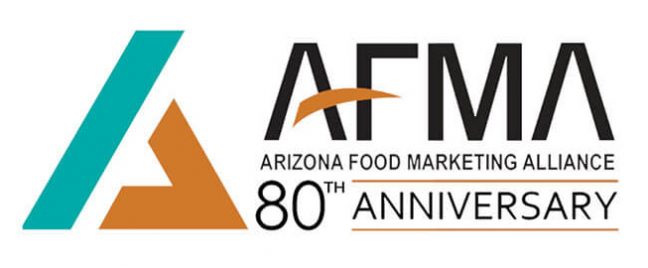AFMA aims to ensure members aware of issues
The Arizona Food Marketing Alliance turns 80 this year. With the anniversary, comes a new motto: “Respect the past…Embrace the future.”
The AFMA has four major goals for 2023. The group intends to grow its membership, improve the AFMA Journal, remain a solid source of information for members and strengthen its education platform and direction. 
Proceeding the state’s first legislative session on Jan. 16, AFMA held its annual Legislative Reception, with Arizona State Treasurer Kimberly Lee serving as the keynote speaker.
But the organization and state legislature are looking to tackle some unique challenges, according to AFMA President Mark Miller.
“Water is becoming a major issue for us for our future. Our growth is really fast, especially in the greater Phoenix area. We’re getting to the point…it is going to cause some big concerns in the future.”
Much of Arizona’s agriculture lies in the southern part of the state, with farms in that area supplying a large share of the country’s lettuce and melons. “They’re having to grow more food with less water,” Miller said.
The Colorado River supplies 36 percent of the state’s water and has been cursed by what the official website for Scottsdale, Arizona describes as a “megadrought.” The term comes from a UCLA-led study released in February 2022 that stated that the past 22 years “have been the driest in at least 1,200 years for the Southwest in North America.”
The drought has led to decreasing crop yields, equitable soil and farm sizes. According to the Arizona State University website, changes are happening.
The website cited a recent survey about the drought by the American Farm Bureau Federation of more than 650 farmers in 15 Western states. “[It] found that 74 percent saw a reduction in harvests and 42 percent switched crops. Among Arizona respondents, 40 percent removed orchard trees or other multi-year crops due to water restrictions.”
The water shortage has led to government mandates that limit the amount of irrigated water that farmers can use. But recent weather offers hope, Miller explained.
“We’re hoping that we’re going to have a big [snow] runoff [from the mountains] in the spring and that’ll help to refill some of our lakes and reservoirs,” Miller said.
However, the state’s dehydration is exacerbated by an ever-increasing population. Over the past year, more than 100,000 people have moved in, causing housing problems and further straining the supply chain, among other issues.
“The homelessness has increased dramatically over the last three or four years. And it is stressing out our charities, our food banks,” Miller said. “The resources aren’t always there. And with the homelessness increasing, it is making it more difficult for our members to keep shopping carts.”
The AFMA runs the Arizona Cart Service, which works with local municipalities and retailers to track down rouge shopping carts and return them to their proper stores.
Within the past year, the ACS has seen its return rate rise more than 12 percent, a total unprecedented in the program’s 15-year history, according to Miller.
As a result, the ACS has had to add drivers, including five within the past year just to serve the Flagstaff area.
The COVID-19 pandemic, population increase and housing shortage have left many residents in economic distress.
AFMA can do little to help its members deal with homelessness or lack of water. Therefore, it hopes to educate them.
“We want to make sure that our members are aware of what’s being done, that there is even a problem…then what’s being done at the state level and the local level to help alleviate [that],” Bednar said. “Arizona has a really good system for storing water, but we can always do better. We just want to make sure that our members are aware that every step that they take to conserve water…it helps the whole state.”
Read about Arizona State Treasurer Kimberly Lee’s history with the grocery industry here.

